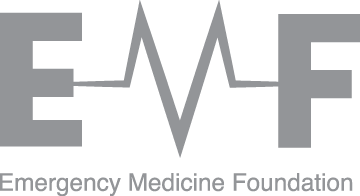
Urine sample instructions make a splash
More than 40 per cent of urine samples are being flushed away because of contamination from external bacteria or skin cells.
But Princess Alexandra Hospital (PAH) Emergency Department’s Dr Rob Eley, who holds a joint appointment with The University of Queensland Faculty of Medicine, said a simple how-to guide managed to decrease the number of contaminated urine samples to just 25 per cent.
In a mid-stream urine sample, the first part of the urine flow is directed into the toilet before the sample is collected.
“Men have the advantage anatomically; it’s much harder for a woman to give a mid-stream urine sample without contamination,” Dr Eley said.
“The PA’s emergency department does about 12,000 urine tests each year.
“Although nursing staff provide instructions on how to do it properly, they can be easily misunderstood or forgotten, particularly in the stressful environment of an emergency department.
“Contaminated samples may need to be retaken, which increases costs, can delay accurate diagnosis and treatment, and can cause patients additional stress and worry.”
Thanks to an Emergency Medicine Foundation grant of more than $26,000 funded by Queensland Health, the PA Hospital’s Emergency Department researchers have found a better way.
Providing an instruction sheet for patients to take into the bathroom with them, with seven coloured illustrations demonstrating the correct procedure, was shown to reduce sample contamination.
“We tested it on 120 women presenting at the PA Hospital emergency department with symptoms which made a urine sample necessary, and compared the results with a control group of 120 patients who did not receive the instruction sheet,” Dr Eley said.
“The number of contaminated urine samples dropped from the normal 40 per cent to just 25 per cent.”
Follow-up interviews with both groups revealed that most patients thought the instruction sheets were helpful, particularly for patients from a non-English speaking background.
“The illustrated instruction sheets are a simple, inexpensive and effective way to reduce the number of tests that need to be redone – saving time and money,” he said.
The ‘how-to’ sheets are now being introduced in the PA Hospital ED and Dr Eley hopes they will be adopted by hospitals nationwide.
EMF Chair Associate Professor Sally McCarthy said the research showed that investing in a simple innovation could lead to improvements for patients and the healthcare system.
“A small change to the way things are done can result in significant gains in both efficiency and cost,” Associate Professor McCarthy said.
“This is yet another example of the ripple effect of EMF-funded research.
“The Foundation is dedicated to keeping Australia at the forefront of emergency medicine research by supporting our best and brightest medical minds in their pursuit of excellence.”
The results from this research were recently published in the Journal of Clinical Pathology.
Photo: Dr Rob Eley with card illustrator, David Toohey, and PA Emergency Department Clinical Research Nurse, Chantelle Judge. Photo courtesy of the Princess Alexandra Hospital.
SHARE



